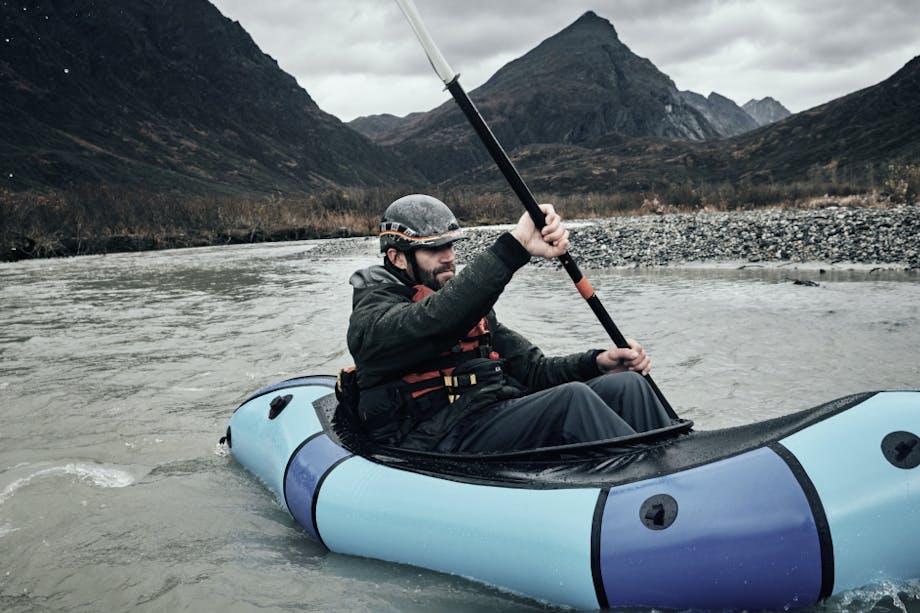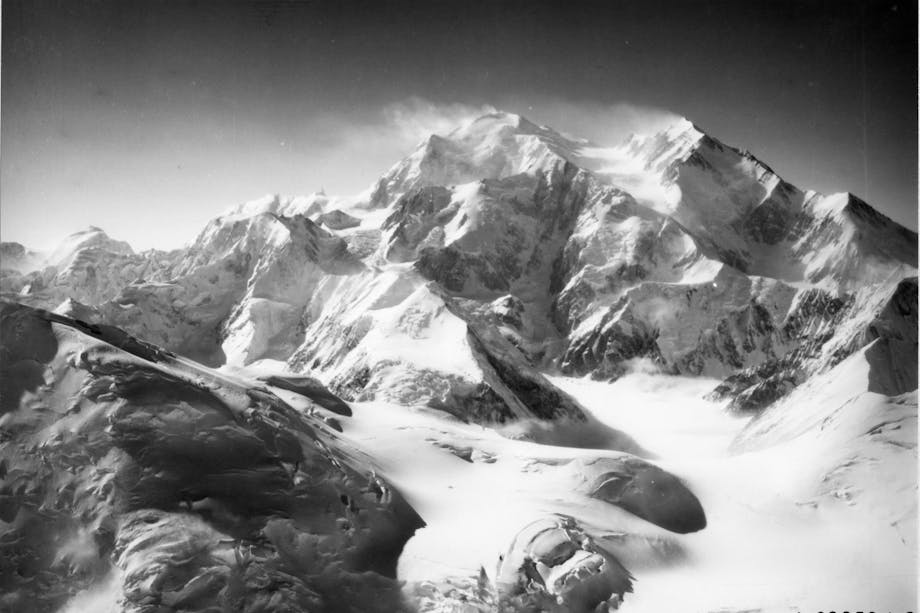A new book, Thirty Below, tells the gripping, true story of the first all-women’s ascent of Denali in 1970. This is also one of the first mainstream adventure/exploration books, a la Into Thin Air and Endurance, featuring women—and written by a woman. Author Cassidy Randall gives us a glimpse into the riveting story and the woman who led the team.
On June 21, 1970, in the late afternoon light on the longest day of the year, six women sorted through a month’s worth of mountaineering gear and food in the Talkeetna hangar of famed Alaskan bush pilot Don Sheldon. The women, led by Alaskan doctor and climber Grace Hoeman, were about to attempt something everyone thought was impossible: become the first all-women’s team to summit one of the world’s great peaks.
Talkeetna, the jumping-off point for flying expeditions to base camp on Denali, was then a tiny town where mountaineers mingled with miners returning from their grubstakes and trappers coming in from their traplines. It was not a place where women abounded, and what few women were there were mostly waiting for their men to return from whatever adventure the wilderness had called them to. And yet here were six strong and capable women organizing their own gear, on their way, alone, to climb the biggest mountain on the continent. The Talkeetna of 1970 had never seen anything like them.


Neither had the rest of the world. By then, we had sent men to the moon, and women still hadn’t stood on the highest points on Earth. The popular belief was that they were incapable of withstanding high altitudes, savage elements, and carrying heavy loads up storm-ravaged slopes without men’s help. Which made Grace’s defiant idea all the more audacious. Especially given Denali’s infamously fierce conditions.
The summit of Denali scrapes the sky at 20,310 feet, towering from a moat of convoluted glaciers like a temple of ice and stone. Huge glaciers flow down all of its sides, reaching up to fifty miles. Boggy tundra, thick boreal forest, and great braided rivers stymied early mountaineers seeking to climb Denali—and that was before they even reached the sawtooth rank of formidable peaks surrounding it. Many of those peaks rise to 17,000 feet on their own, most of them unclimbed in 1970, and all of them dwarfed by Denali’s astonishing mass. It’s why, in every language of the Athabaskan people living near the mountain, its name is similar: the Tall One, the High One, the Great One.
Denali rises from a plateau that’s only two thousand feet above sea level, which means its twin peaks gain eighteen thousand feet from its base—a full six thousand more in vertical rise than Everest from its base. Such altitude gain requires climbers to be on the mountain for longer to acclimatize as they ascend, which also exposes them to Denali’s frequently fierce weather for longer. Because it’s the highest polar mountain, sitting on the far north 63rd parallel, its air is thin like Everest’s. And because it’s so close to the coast, powerful low-pressure systems can create quicksilver-fast, bitingly cold storms out of nowhere. More than a hundred people have died on the mountain since people began attempting to climb it in 1903. At least thirty of their bodies remain on its icy slopes.
Everyone told Grace and her team that it couldn’t be done. And not just that—they weathered plenty of insults on their individual journeys to get to this moment. Grace had been told she had “illusions of grandeur” and “light experience” (she’d climbed on several continents and had several first ascents to her name, five of them solo). Arlene, the team’s deputy leader, had been told that there was “no way dames could ever make it up that bitch,” “women climbers either aren’t good climbers or they aren’t real women,” and “Women should be able to climb Denali more readily than men—after all, they have all that extra insulation.”
If anyone could handle those digs, it was the six women of this team. Grace Hoeman, Arlene Blum, Dana Isherwood, Margaret Young, Faye Kerr, and Margaret Clark were already accustomed to navigating men’s worlds, and not just as rare female climbers. They were doctors, chemists, geologists, pilots, and mechanics. Between them, they had already scaled both literal and figurative mountains across the globe.
When they set foot on the mountain later that night of summer solstice, 1970, the six Denali Damsels began their attempt at something nearly everyone thought was impossible.
Fifteen days later, when things started to go disastrously wrong in the thin air on top of Denali, the team’s actions then would decide not just their fate. They would determine how the world would judge them—and all women’s ability to climb and survive the fiercest mountains.
Read the team’s epic adventure story in
Thirty Below: The Harrowing and Heroic Story of the First All-Women’s Ascent of Denali. By: Cassidy Randall






